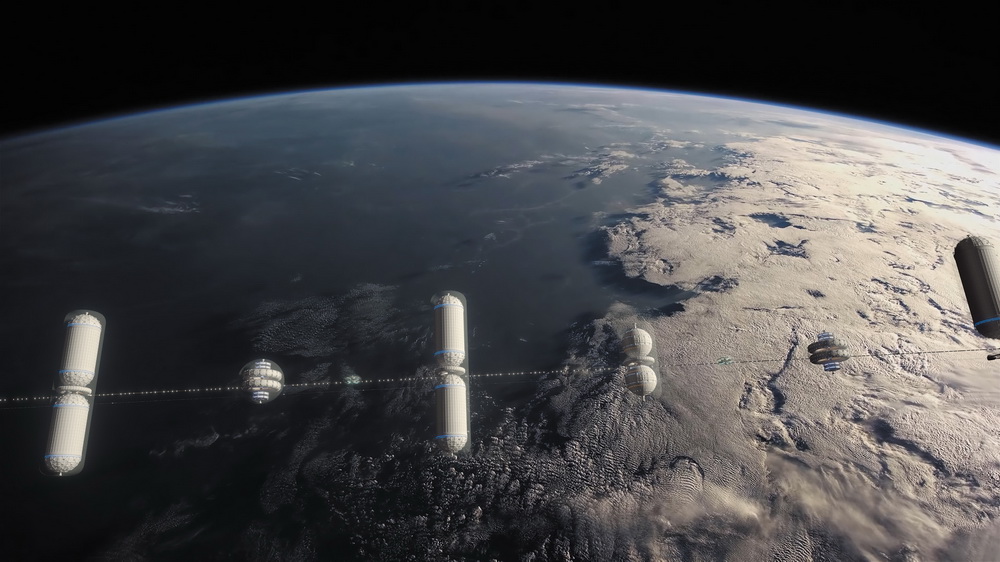Точка невозврата для цивилизации: о чём идёт речь в аудиокниге автора транспорта uST?

Недавно в свет вышла аудиокнига генерального конструктора Unitsky String Technologies Inc. Анатолия Юницкого. Напомним, она базируется на основе доклада автора транспорта uST – «Цивилизационная ёмкость космического дома по имени планета Земля». Учёный заострил внимание не только на вопросах экологической ситуации, но и подчеркнул важность проблемы выживания человеческой цивилизации в скором времени.
«По ряду прогнозов точка невозврата для цивилизации наступит всего лишь через два поколения. И мы никогда не сможем вернуться назад. Поскольку именно инженерные технологии создали глобальные проблемы, то только инженеры, а не политики и банкиры, способны найти опять же инженерные решения, которые спасут нашу цивилизацию, по очень многим параметрам идущую в тупик, от её деградации, угасания и гибели», – отмечает Анатолий Юницкий.
Для решения земных проблем белорусский учёный предлагает идею доставки грузов на околоземную орбиту при помощи Общепланетарного транспортного средства (ОТС), которое сможет вынести всё вредное производство за пределы планеты Земля. Вместе с тем откроются удивительные возможности разместить заводы и фабрики в условиях невесомости, почти полного вакуума, сверхнизких и сверхвысоких температур. И они, эти условия, совсем рядом – каких-то несколько сот километров.
К слову, отправной точкой здесь должно стать повсеместное использование струнного транспорта. До конца века он убережёт от гибели на автодорогах около 100 миллионов жизней и позволит землепользователям вернуть огромные территории, которые сегодня занимают асфальтированные и железные дороги.

По словам инженера, геокосмический транспорт будущего будет выгодно отличаться от современных ракетных решений. Во-первых, эффективностью, так как сможет обеспечить ежегодный грузопоток в миллионы тонн между Землей и орбитой – за один рейс выводить на орбиту порядка 10 млн тонн грузов и до 10 млн пассажиров. Следует отметить, что за год ОТС сможет выходить в космос до 100 раз. Во-вторых, высокой скоростью. То, что способно сделать ОТС за один год, современной мировой ракетно-космической отрасли потребуется порядка 10 000 лет. При этом затраты на доставку каждой тонны груза на орбиту будут снижены в сравнении с ракетой в тысячи раз. В-третьих, экологичностью, так как транспорт работает только на внутренних силах системы, без какого-либо механического и энергетического взаимодействия с атмосферой планеты.
«Многие скажут, что воплотить теорию на практике слишком масштабно, материалоёмко и дорого. Но так ли это на самом деле? Ведь для решения земных транспортных проблем, гораздо более простых, чем космические, человечество затратило к сегодняшнему дню огромные усилия. Построены миллионы автомашин, самолетов, тепловозов и кораблей, миллионы километров автомобильных и железных дорог, тысячи портов, мостов и вокзалов. Это всё стоит куда больше, чем ОТС», – утверждает учёный.

Безусловно, в ходе реализации проекта Общепланетарного транспортного средства необходимо будет справиться с большим количеством трудностей как в техническом, так и в социальном плане. Однако они ничтожны по сравнению с теми проблемами, которые предстоит решить нашей земной цивилизации, если она хочет выжить и устойчиво развиваться в будущем. Да и есть ли у нас выбор?
Читайте также

Новости
5 июля 2023 г.
Гендиректор UST Inc. – об актуальных логистических трендах-2023
Как можно трансформировать транспортную отрасль уже сегодня? Узнайте мнение Надежды Косаревой в публикации на Хайтек+.

Новости
22 мая 2024 г.
Решение uST рассматривают для интеграции с морскими портами
Компания DP World заинтересована использовать технологию uST в сфере морских перевозок.

Мнение
14 октября 2021 г.
Clean Technica: Unitsky String Technologies предлагает городам более гибкий вид общественного транспорта, который поможет справиться со следующей пандемией
Clean Technica: Unitsky String Technologies предлагает городам более гибкий вид общественного транспорта, который поможет справиться со следующей пандемией

